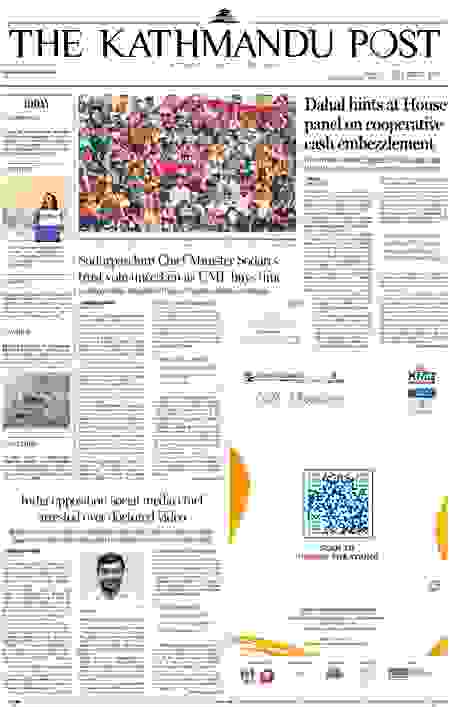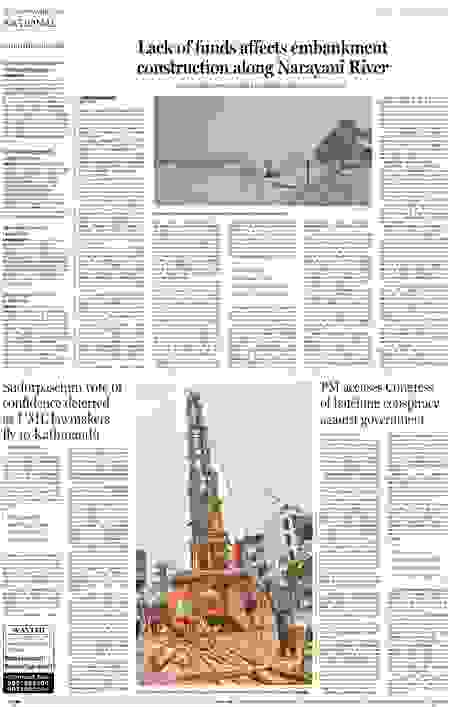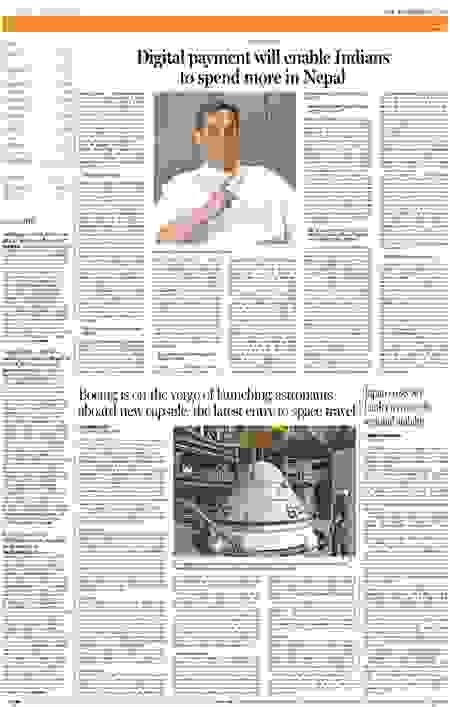Dahal hints at House panel on cooperative cash embezzlement
Kathmandu, May 4
Prime Minister Pushpa Kamal Dahal has hinted of his readiness to form a parliamentary committee to investigate the embezzlement of depositors’ money by the operators of several cooperatives around the country.
According to a police probe, dozens of cooperative firms have embezzled and misused billions of rupees from millions of depositors.
The main opposition Nepali Congress has long been demanding such a parliamentary panel to initiate a probe against Deputy Prime Minister and Minister for Home Affairs Rabi Lamichhane, who allegedly was involved in embezzling millions of rupees, particularly from two cooperatives based in Butwal and Pokhara. Addressing a parliamentary party meeting of the CPN (Maoist Centre) on Saturday, the prime minister said that the misuse of cooperatives deposits has become a serious and complex issue. Discussions are underway to constitute a parliamentary committee to comprehensively deal with the issue, he added.
The proposed committee will study the problems faced by all cooperatives and will explore ways to return the money of depositors, Devendra Poudel, a Maoist lawmaker, told the Post.
A Nepali Congress leader said the prime minister has communicated his plan to party president Sher Bahadur Deuba.
The committee will look into the issue in totality rather than targeting a particular politician, the Congress leader said. However, the largest party in the House of Representatives, which obstructed its proceedings in the winter session of Parliament, is not convinced by the prime minister’s proposal, according to the leader.
As the government has called the budget session for May 10, the main opposition says it will again raise the matter of constituting a parliamentary committee.
Ahead of the house session, “we will call a meeting of the parliamentary committee on Thursday”, Nepali Congress General Secretary Bishwa Prakash Sharma said. “The formation of a parliamentary committee to probe [the issue of] cooperatives [fund] embezzlement and the involvement of Home Minister Lamichhane and investigating the property of all public office holders after 1991 will be our main agenda,” Sharma said.
Some Congress leaders including the other party general secretary Gagan Thapa have proposed that properties of public office holders since 1991 be investigated by an all powerful body in order to control corruption that has become rampant in recent years.
Demanding the committee, the Congress continuously protested in the House and did not allow the government to present any bill. The budget session will start on Friday.
“The party has not changed its position on the cooperative issue and will disrupt House proceedings if the government does not heed our demand,” said Ramesh Lekhak, the Congress chief whip.
The prime minister briefed his party leaders on the possibility of the Congress giving continuity to the protests in the House. “It is not sure whether the upcoming House session can do its regular business,” a Maoist lawmaker quoted the prime minister as saying at the parliamentary party meeting. “There is uncertainty if the House can run smoothly.”
Prime Minister Dahal also told party leaders that the government was in consultation with several political parties to resolve the crisis.
“If the House fails to resume its normal business, the government cannot present its budget and hold discussion on it,” said Poudel. “This is why the prime minister is serious about resolving the matter soon.”
The prime minister told his party that he would call an all-party meeting soon to discuss a way out.
In the meeting, the prime minister also defended Home Minister Lamichhane. “We know issues about cooperatives are serious but we should not blame one leader,” said the prime minister. “As this is a serious and complex issue, we will seek some kind of remedy from the Cabinet. Not just one leader, we have to look at the problem in its totality and this is what we are trying to do now.”
However, Lamichhane has been denying his involvement in the embezzlement of the cooperatives’ fund. In the Maoist meeting, the prime minister reportedly said that the main opposition might have linked the home minister with cooperative scams in order to sow discord in the ruling coalition.
Congress leader Shekhar Koirala, however, said they were not asking for the home minister’s resignation but wanted a parliamentary committee to look into his alleged involvement in the misuse of savings.
“But why is the government reluctant to form the probe?” Koirala asked. “If Lamichhane is clean and is not involved in the misuse of cooperative funds, he wouldn’t stand against the parliamentary committee and would be sure about continuing as home minister.”
On the other hand, the prime minister accused Congress
leaders of hatching a conspiracy against the government immediately after they were forced to leave the government.
Dahal briefed Maoist lawmakers that the discontent expressed by Madhav Kumar Nepal, chairman of the coalition partner CPN (Unified Socialist), was not
serious but is manageable.
“This does not threaten the stability of the government,” said the prime minister, according to another Maoist lawmaker. There are some technical issues at the centre and in provincial governments, said the prime minister. “These are manageable.”
The prime minister also
said that the government
would increase the size of the annual budget to address public aspirations.









